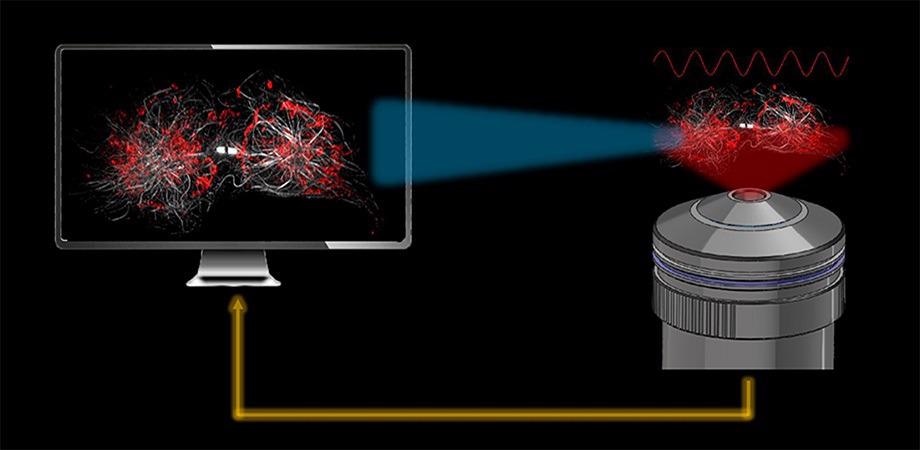Reviewed by Alex SmithApr 13 2022
The method of superresolution structured illumination microscopy (SR-SIM) for observing the subcellular dynamics in living cells is exceptional. With hundreds to thousands of time points, which are the number of superresolution frames for continuous imaging, SR-SIM can achieve quick, optically sectioned (OS), superresolution (SR) observation.
 JSFR-SIM enables real-time observation of fine subcellular dynamics. Image Credit: Zhaojun Wang and Ming Lei, Xi’an Jiaotong University.
JSFR-SIM enables real-time observation of fine subcellular dynamics. Image Credit: Zhaojun Wang and Ming Lei, Xi’an Jiaotong University.
As a result of a complex workflow and a huge number of calculations, the reconstruction algorithm for OS-SR-SIM causes a great computing burden. This effectively eliminates real-time imaging, as reconstructing a single SR image of 1024 × 1024 pixels takes 4 to 8 seconds.
Microscope operators should first navigate the promising field-of-view for their exploration in widefield mode, then switch to SR-SIM mode to obtain the raw images for SR-SIM, and then wait longer for a single SR image to appear after dedicated postprocessing. The disjointed workflow of the SIM setup prevents biologists from widely implementing SR-SIM.
Parallel computing tools like GPUs can currently be used to speed up SR reconstruction, however, the outcome is restricted to small raw image size.
Researchers from Xi’an Jiaotong University (XJTU, China) successfully created the “Joint Space and Frequency Reconstruction” (JSFR-SIM) rapid reconstruction algorithm to resolve both reconstruction speed and the missing cone problem. The study was published in the Advanced Photonics journal.
The scientists integrated a spatial domain processing technique with OS-SR-SIM in the frequency domain to improve image reconstruction speed as well as suppress the fuzzy background in thick cell images.
The reconstruction is 80 times faster than the extensively used Wiener-SIM. Importantly, the speed boost is not at the expense of image quality. The researchers used real-time live-cell observation of COS-7 cells to demonstrate the method’s effectiveness, uncovering insights into microtubule dynamics and rapid mitochondrial tubulation.
Complex intracellular dynamics can be visualized in real-time and the resulting images are quantitated using the JSFR-SIM method, which helps make locating and imaging a field-of-view at superresolution a simple and routine process. It is compatible with a variety of SIM modalities and uses the same hardware as the traditional 2D-SIM.
As a result, it can be used in a variety of new SIM modalities, such as pSIM, AO-SIM and GI-SIM, to reduce computational burden even when imaging thicker samples. This breakthrough has the potential to boost biologists’ productivity and make SR-SIM a more common tool in biomedical labs.
JSFR-SIM enables real-time visualization of microtubule and mitochondria dynamics. Video Credit: Wang et al.
Journal Reference:
Wang, Z., et al. (2022) High-speed image reconstruction for optically sectioned, super-resolution structured illumination microscopy. Advanced Photonics. doi.org/10.1117/1.AP.4.2.026003.